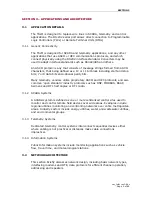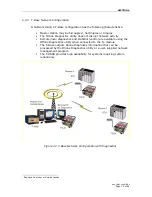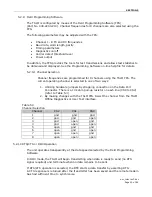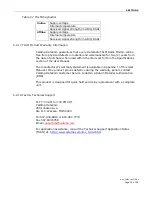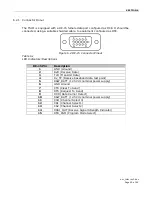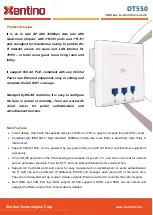
SECTION 4
um_tslm rev3.doc
Page 11 of 62
S
S
E
E
C
C
T
T
I
I
O
O
N
N
4
4
–
–
S
S
Y
Y
S
S
T
T
E
E
M
M
P
P
L
L
A
A
N
N
N
N
I
I
N
N
G
G
A
A
N
N
D
D
D
D
E
E
S
S
I
I
G
G
N
N
4.1
UNDERSTANDING RF PATH REQUIREMENTS
Radio waves are propagated when electrical energy produced by a radio
transmitter is converted into magnetic energy by an antenna. Magnetic waves
travel through space. The receiving antenna intercepts a very small amount
of this magnetic energy and converts it back into electrical energy that is
amplified by the radio receiver.
A radio modem requires a minimum amount of received RF signal to operate
reliably and provide adequate data throughput. In most cases, spectrum
regulators will define or limit the amount of signal that can be transmitted.
Transmitted power decays with distance and other factors as it moves away
from the transmitting antenna.
Other factors that will decay a signal include obstructions such as hills,
buildings and foliage, and the horizon – i.e. the bulge between two points of
earth. Minimal signal degradation may occur as a result of environmental
conditions such as fog, rain, dust storms or other similar factors.
There are several methods to ascertain the available RF coverage from a
transmitting station. This can be accomplished by:
A.
Using basic formulas to calculate the theoretically available signal –
allowing for free space path loss due to distance and equipment signal loss
B.
Using sophisticated software to build earth terrain models and apply other
correction factors such as earth curvature and the effects of obstructions
C.
Actual in-field signal strength testing
As good design practice, CalAmp DataCom recommends the results of at least
two of these modes be considered to design a radio path with one of the
results being the actual in-field signal strength test.
4.2
SELECTING ANTENNAS
Antennas come in a variety of shapes and sizes, but fall into two basic
categories: directional and omni-directional. Directional antennas are
designed to focus and radiate the RF energy in one specific direction.
Generally, in a point-to-point network, directional antennas will be used. In a
point-multipoint network, with a base station and a several remotes, the base
station will use an omni-directional antenna and the remotes will use
directional antennas. Figure 4.1 shows some antenna variations.









